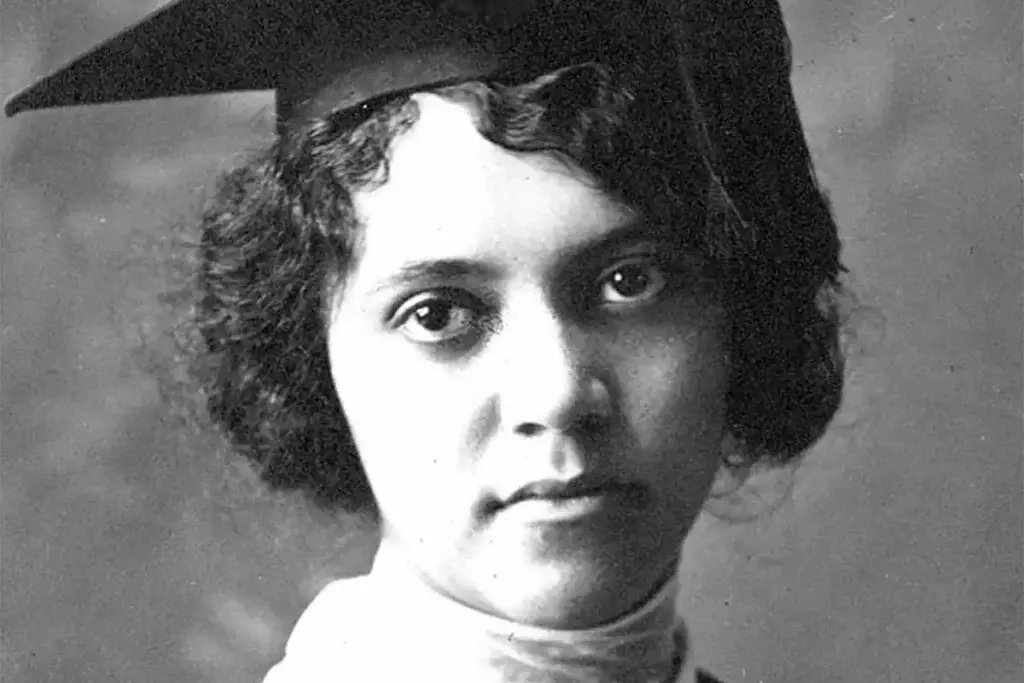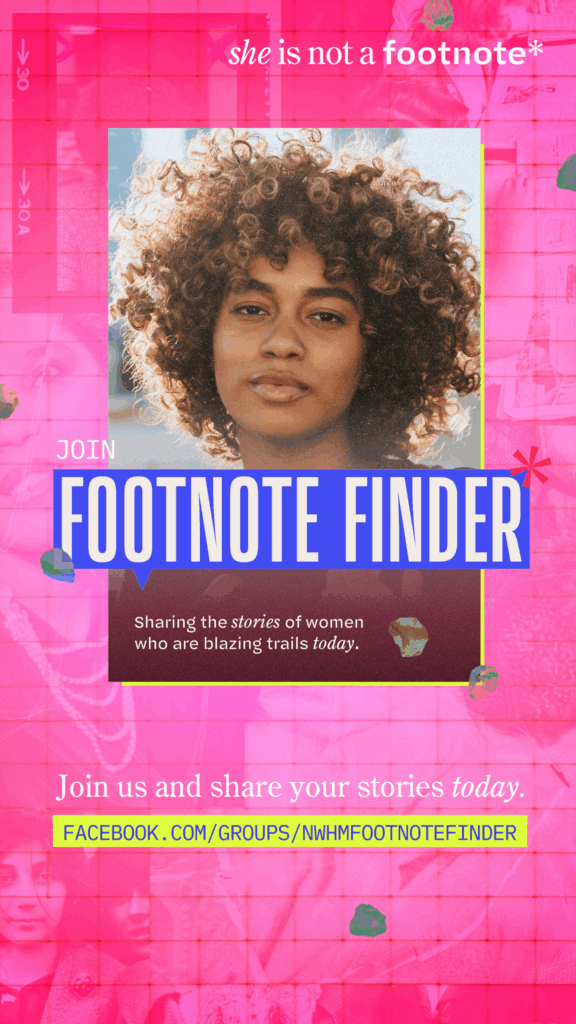She Is Not A Footnote: Restoring Women To The Heart Of History

Women’s stories have often been underrepresented, whether they have been demoted to just a brief acknowledgement, credited to someone else or forgotten altogether. This isn’t true for all women’s stories, but it is a consistent pattern within fields like politics, science, art, and more for years. The National Women’s History Museum is changing that with its bold new campaign, She Is Not a Footnote. This initiative is more than a trending moment for women. It’s a movement created to restore our collective memory by putting women center stage in the story of history.
“We wanted a name that makes people pause and think: she belongs in the main text, not as an afterthought,” said CEO Frédérique Irwin. “When people hear it, I hope they feel both the injustice of omission and the power of correcting the record.”
The campaign is meant to be a wake up call for people, Frédérique said. She Is Not a Footnote is showing and driving the transformation happening as we reclaim our narratives and get the credit deserved.
Young Women’s Perspectives On Today’s Challenges
The museum’s Young Women and Girls’ Aspiration Report released in June made it impossible to delay action any longer. They surveyed 1,127 girls and young women aged 13–27 across the U.S. The goal was to record young women’s perspectives about challenges they face and what needs to change in order for a better future. In partnership with DoSomething Strategic and the Center for the Advancement of Women at Mount Saint Mary’s University, they were able to gather data through their partners’ networks and social outreach.
The report revealed more than 80% of young women believe women face more barriers to advancement than men, and less than half feel they have equal access to career opportunities.
Highlighting Women Who Broke Barriers
She Is Not a Footnote is responding by highlighting women throughout history who broke barriers. Their stories make it clear that talent has never been the problem, systems have. Systems of education, leadership, and cultural systems like media representation that decide whose stories are taught, credited, and showcased. And young women today deserve to see themselves as leaders shaping the future.
However, representation isn’t just about finally being noticed. It’s about receiving credit where credit is due. Frédérique references Alice Ball, a young Black chemist who developed the first effective treatment for leprosy. Her male colleague ended up taking credit for it after her death.
“Brilliance knows no gender or race, and acknowledging women’s contributions reshapes how we define innovation and leadership,” Frédérique said.
The museum is doing more than just mentioning Alice Ball’s name. They are reclaiming the narrative by centering her story in exhibits, the museum’s programs and curriculums. It gives young women a chance to see innovation and excellence firsthand. The museum is actively restoring women’s place in the historical record and redefining leadership for the next generation.
“We bring history to people, rather than waiting for them to find us,” Frédérique said.

Curated Experiences For Everyday Life
Accessibility is a primary focus for the museum. The National Women’s History Museum is a digital-first organization, which means they do not have a physical location in DC. This includes viral videos, digital exhibits, traveling exhibitions, and classroom resources. They meet people where they are. Not just for moments like Women’s History Month or International Women’s Day, but they have created curated experiences that intertwine into your daily life.
“Start sharing women’s stories,” Frédérique said. “Amplify one of ours, or highlight a woman in your own field. Every share shifts the narrative, and visibility builds momentum. If you’re able, support our campaign so we can reach even more people.”
The museum emphasizes that everyone has a responsibility to shine a light on this restoration because shifting narratives requires collective action, not just individual effort. Frédérique said it doesn’t take major, big actions to create change. It’s about the small, tangible things you can do such as sharing, recognizing, and celebrating women’s achievements.

Unsung Heroes
According to the museum’s fractional CMO, Lisa Franklin, her great aunt Dr. Dazelle Simpson broke barriers as the first Black female pediatrician to become board certified in Florida. She was first in her class at Meharry Medical College, had a private practice seeing patients, including house calls, while giving back to the community daily.
“She was just one of those unsung heroes,” Lisa said.
Sakyra Abbitt, a fellow in the museum’s digital archives and communications department, explained how the influence of her Black female college professor, Dr. Ashleigh Greene Wade, shifted the way she thought about Black women’s care and joy in academia. This perspective helped shape Sakyra’s desire for discovery she hadn’t thought about before. It’s a lesson she now carries into her work with the museum, ensuring that campaigns like She Is Not a Footnote capture the importance of women’s stories in their wholeness, not just pieces of the story.
“Hearing about the barriers that [my professor] went through as a Black woman in the field of academia and then still being able to come out on the other side and share stories was very inspiring to me,” Sakyra said. “Success is when women’s history is no longer a side note. When girls see themselves reflected everywhere—classrooms, media, leadership stories—without a campaign pointing it out. True success is a cultural shift: a world where everyone believes women’s achievements are limitless, and that belief translates into reality across every sector.”
The museum is laying the foundation for the cultural shift, especially with their initiative Footnote Finder. It’s an online community where students, community members, educators and more can share stories of women whose contributions may have been overlooked. This direct invitation is a way the museum is turning this into a collective action, and building a growing archive of women’s achievements.
Women’s stories remain underrepresented across media, classrooms, as well as the representation of leaders across history. The She Is Not a Footnote campaign is actively highlighting women who have shaped history and created space for others. With the ongoing programs and projects, the National Women’s History Museum is ensuring women’s contributions are being recognized and remembered as an important part of history.
[Editor’s note: This article was made possible by the National Women’s History Museum.]






